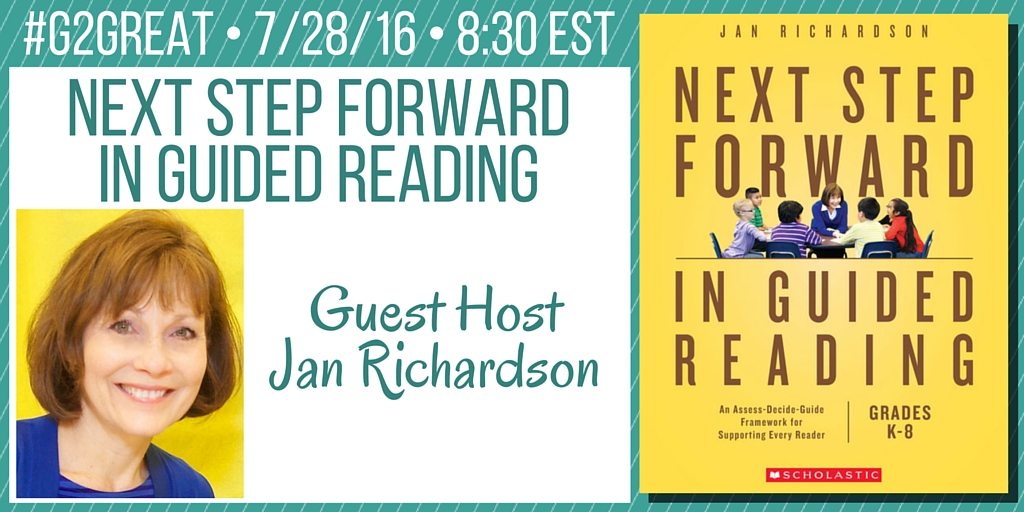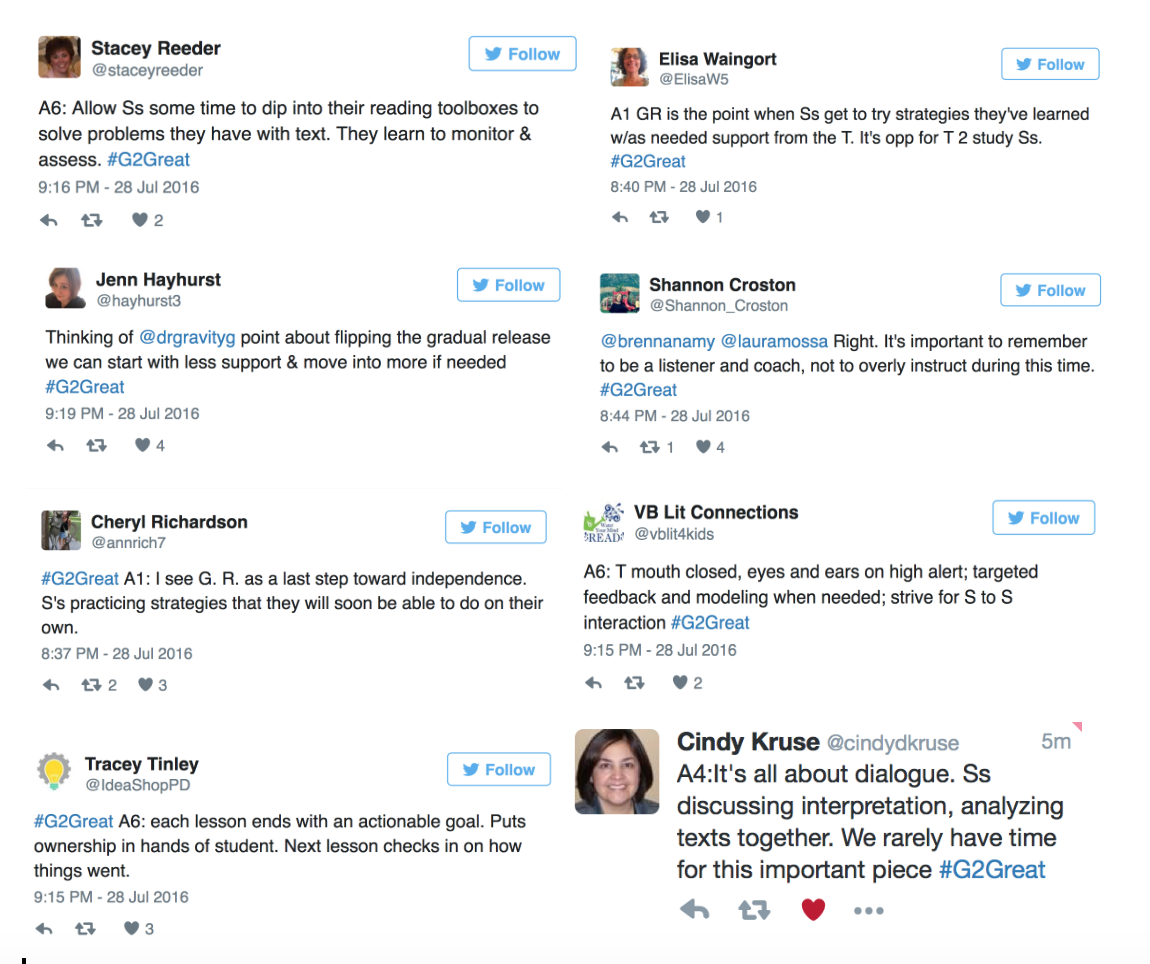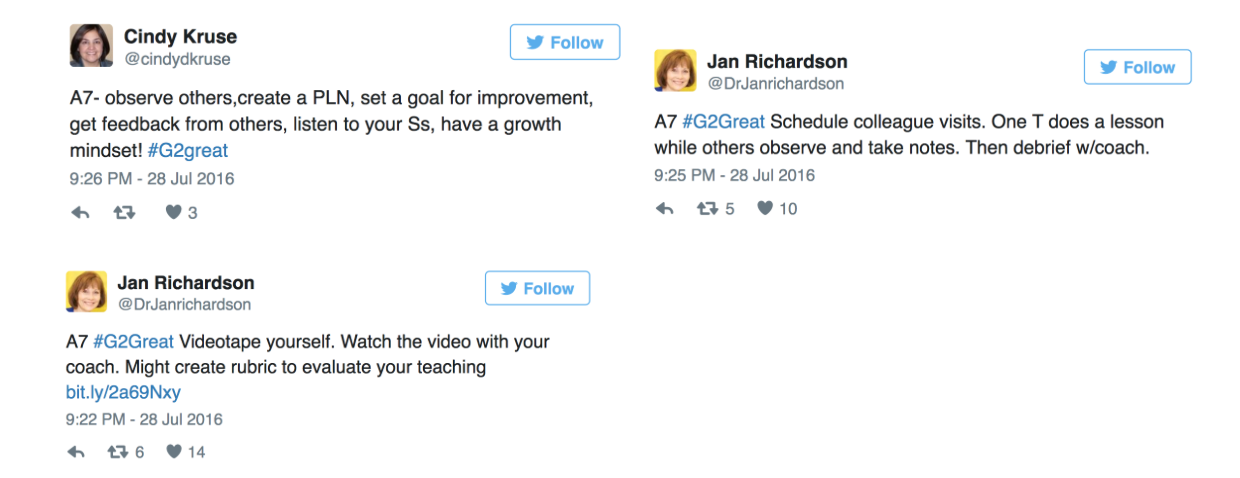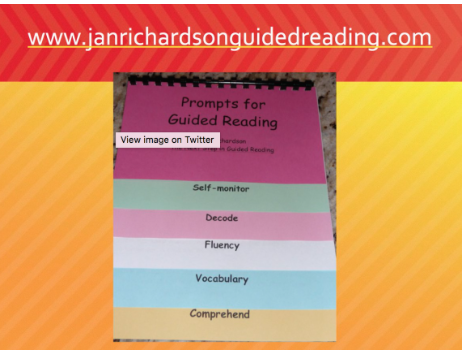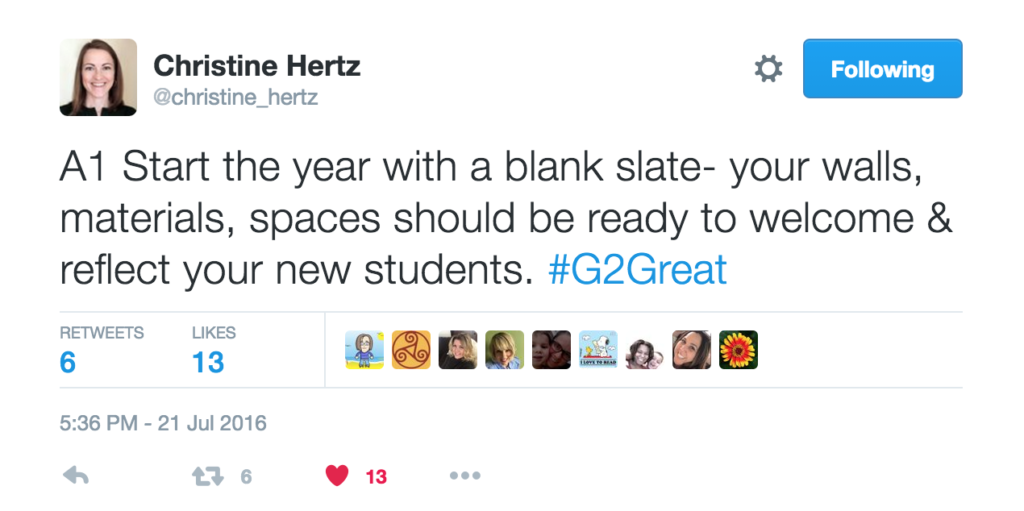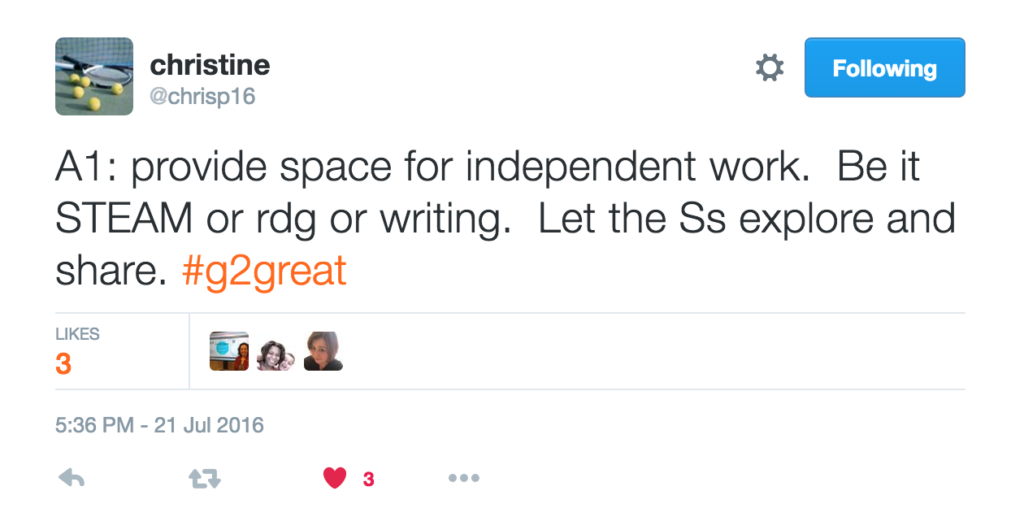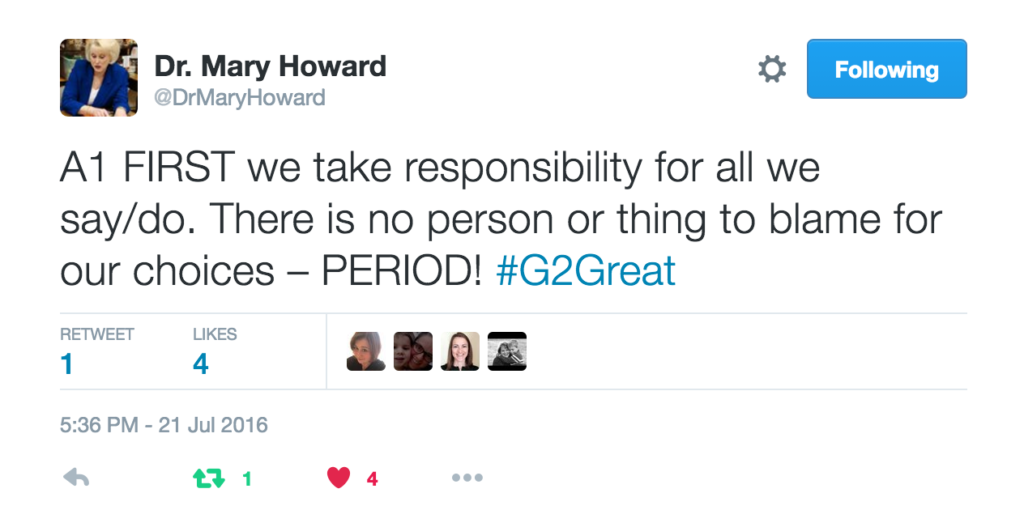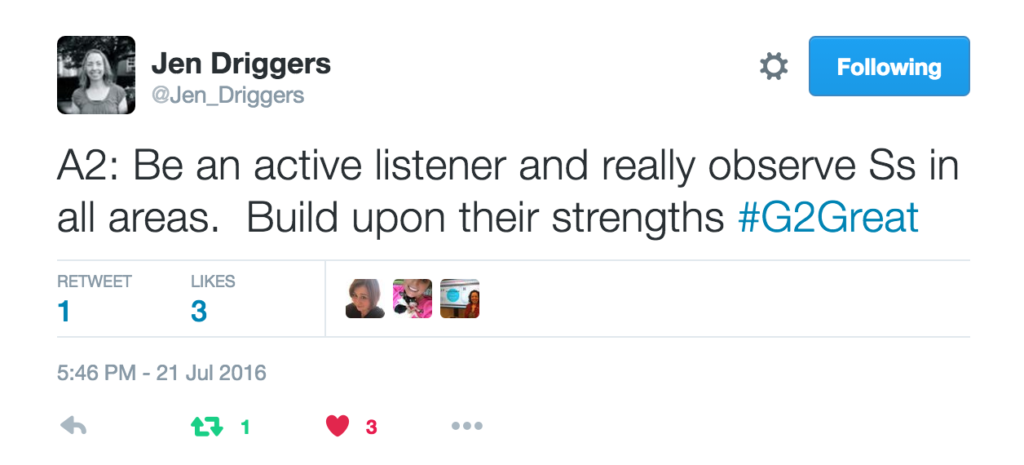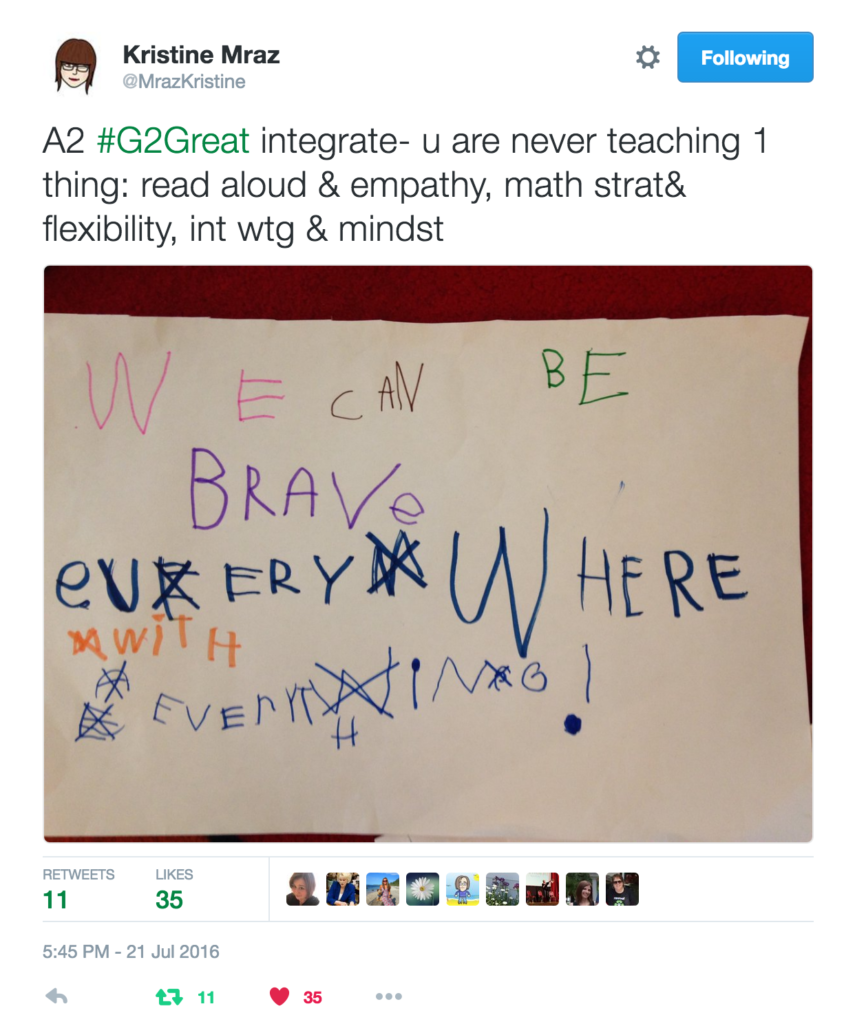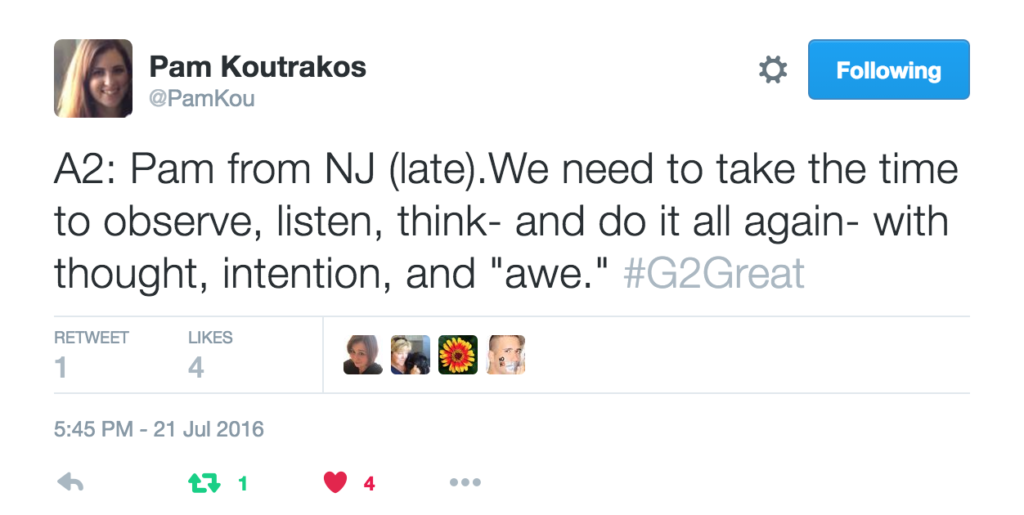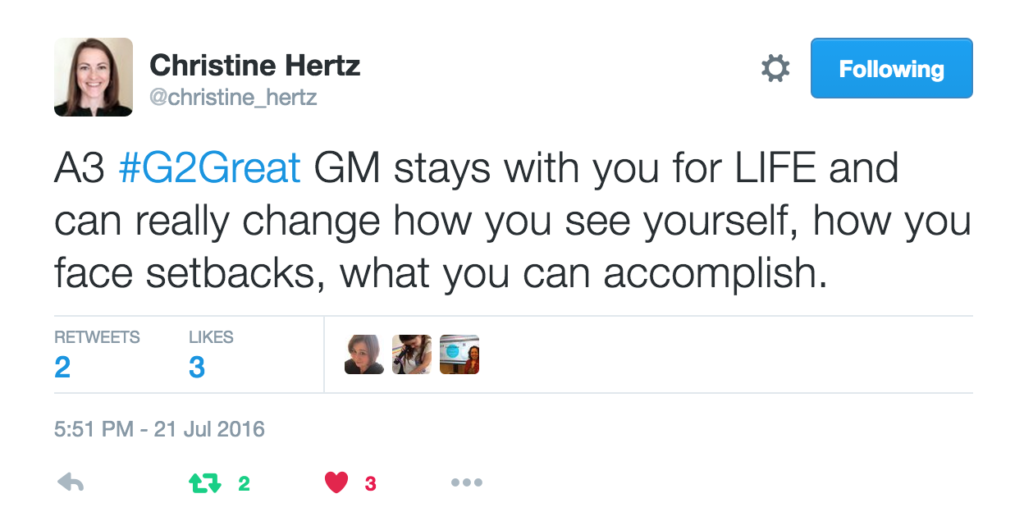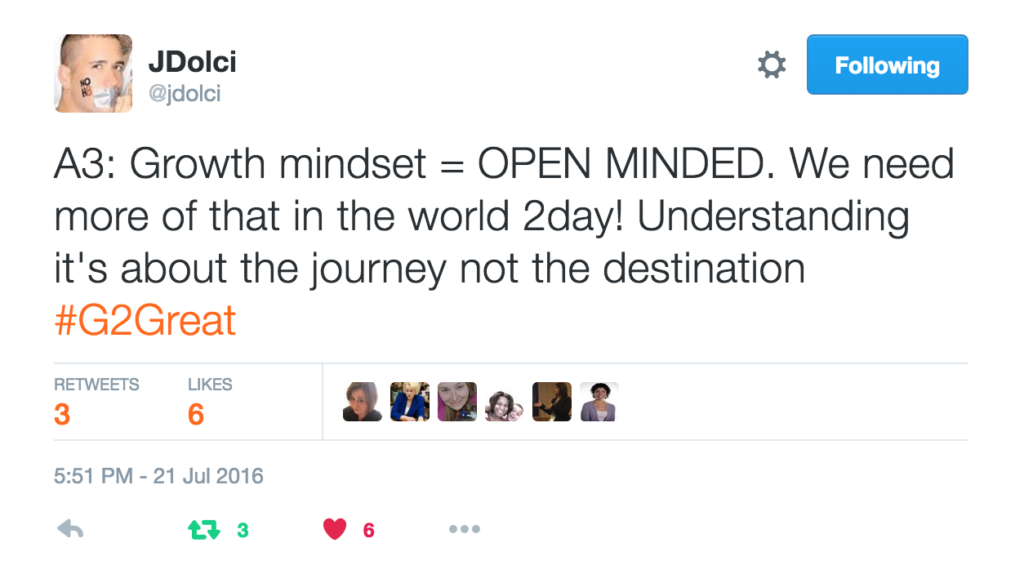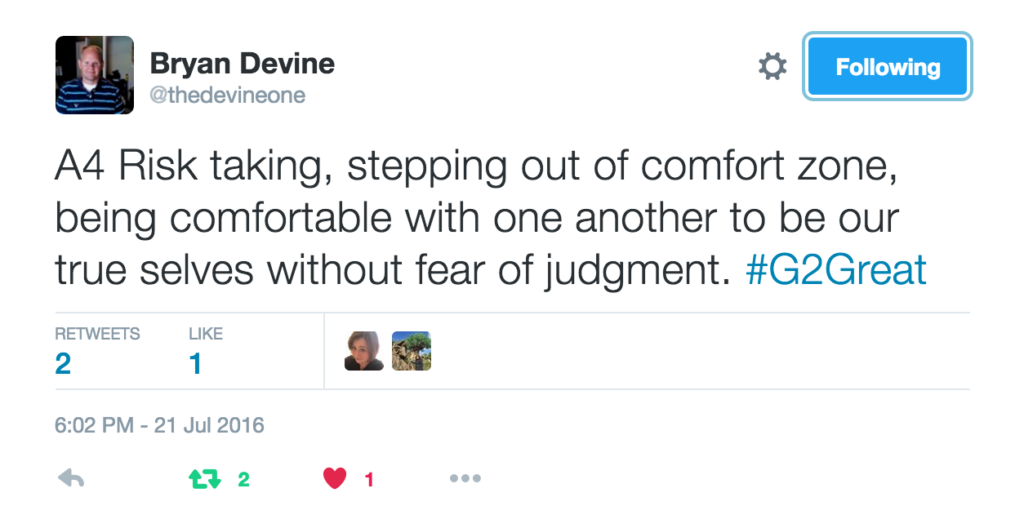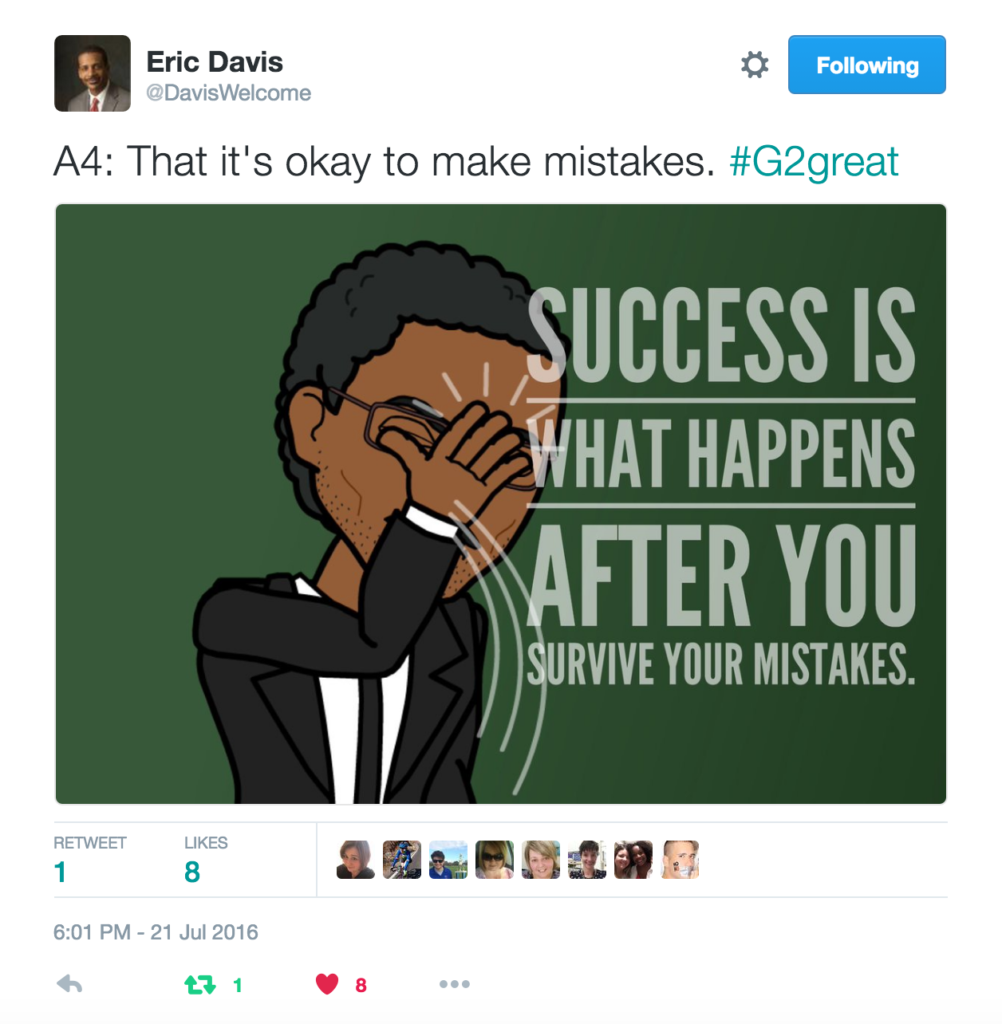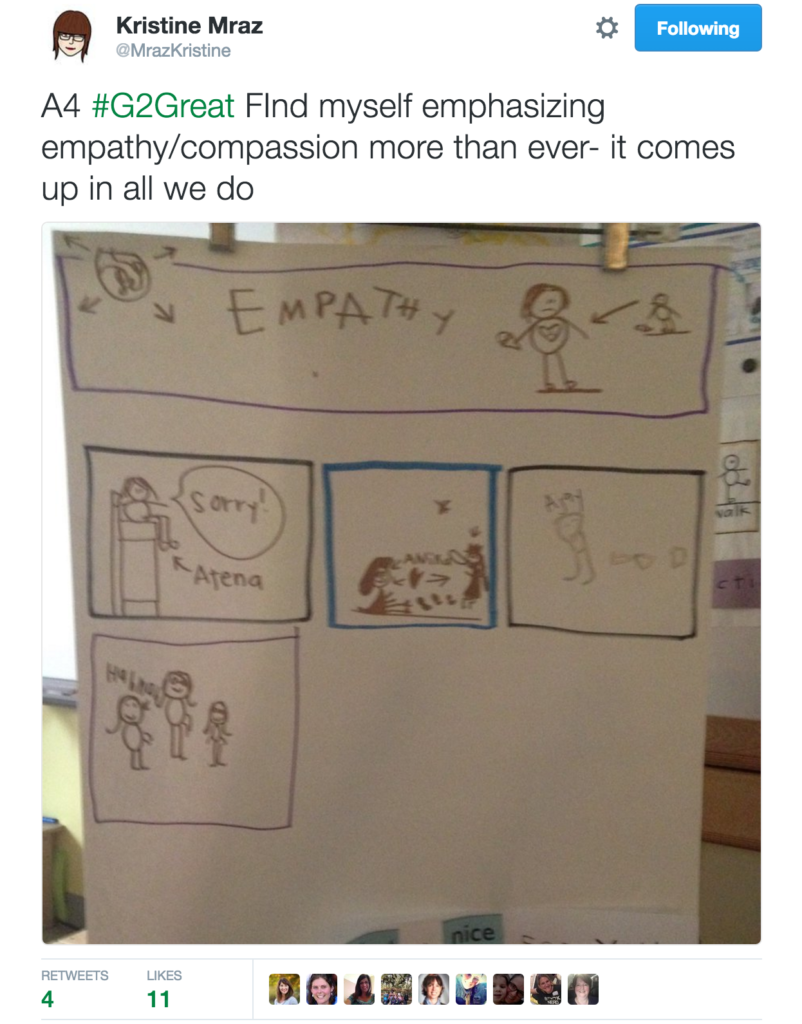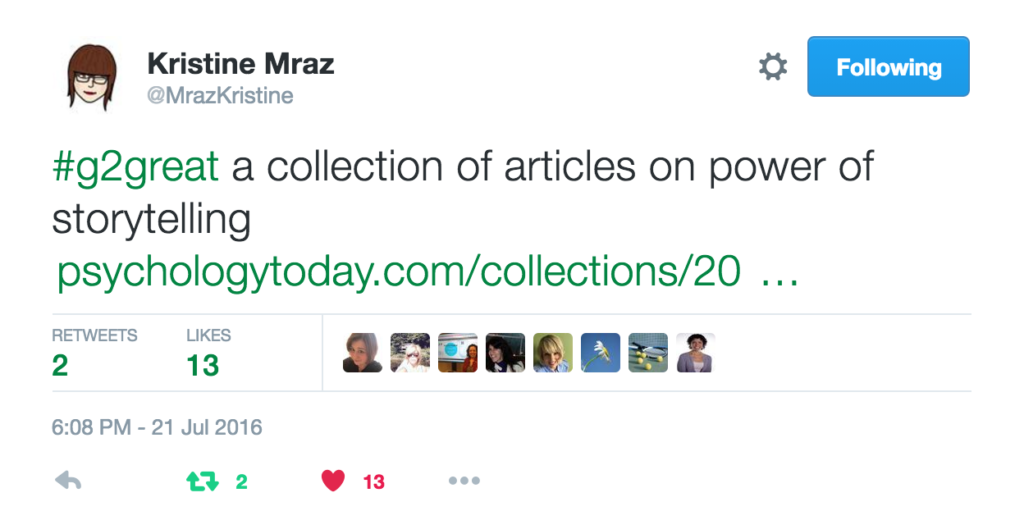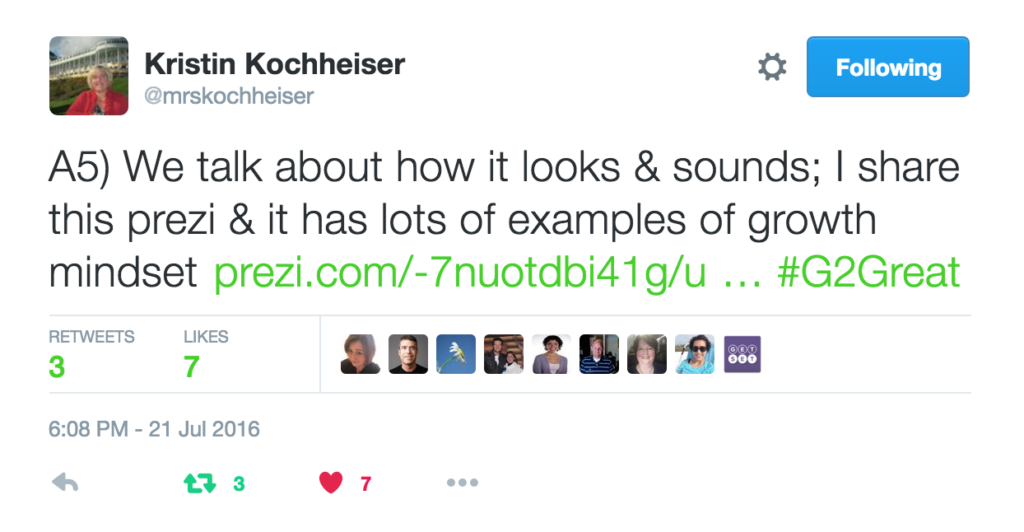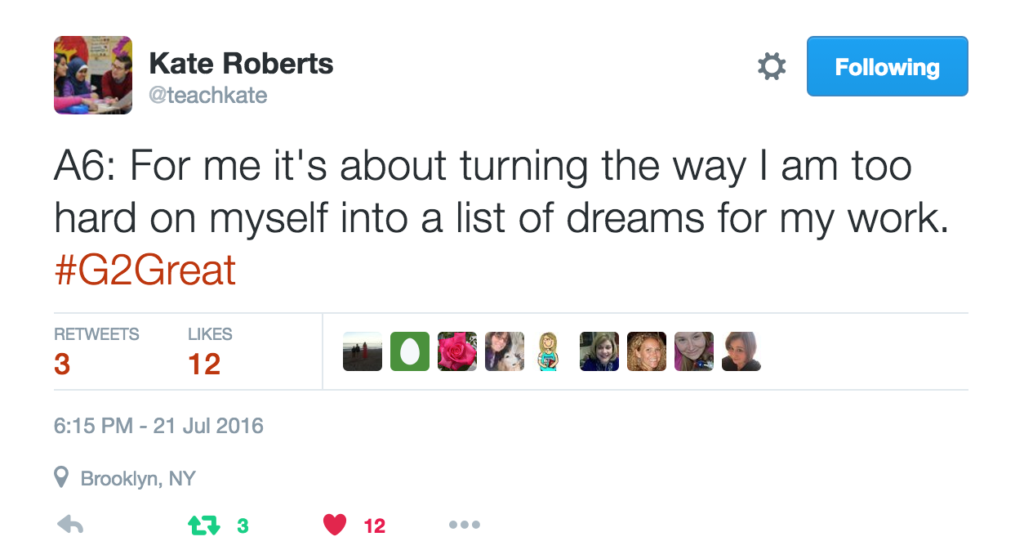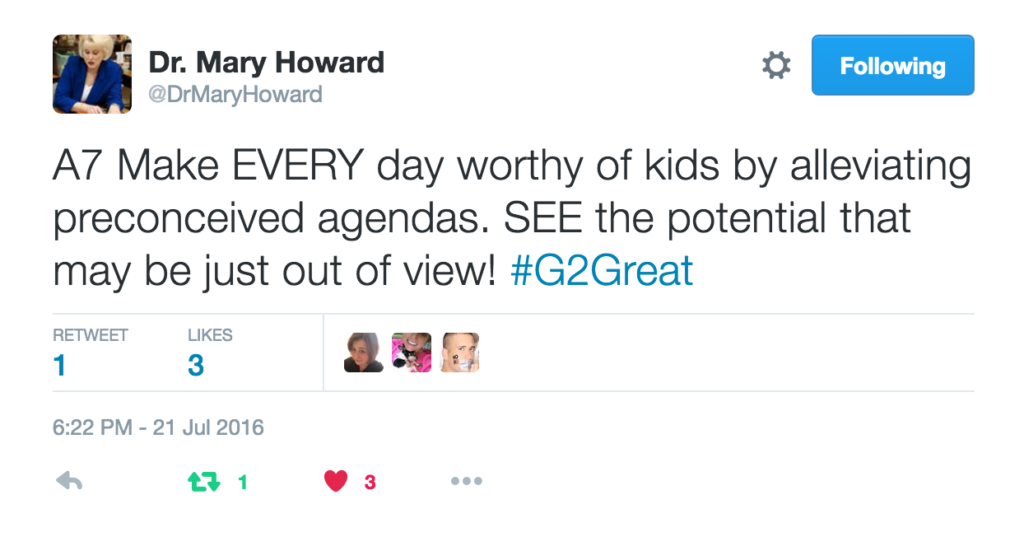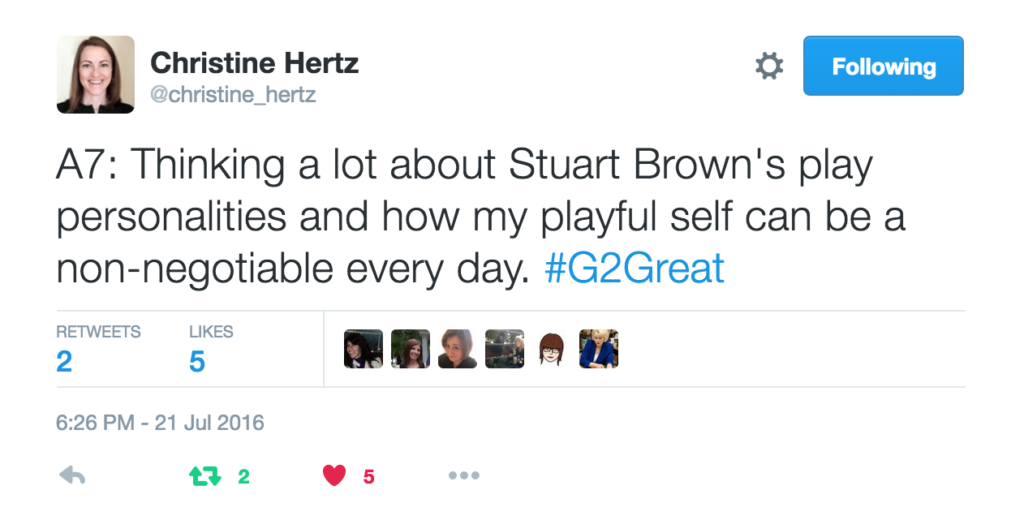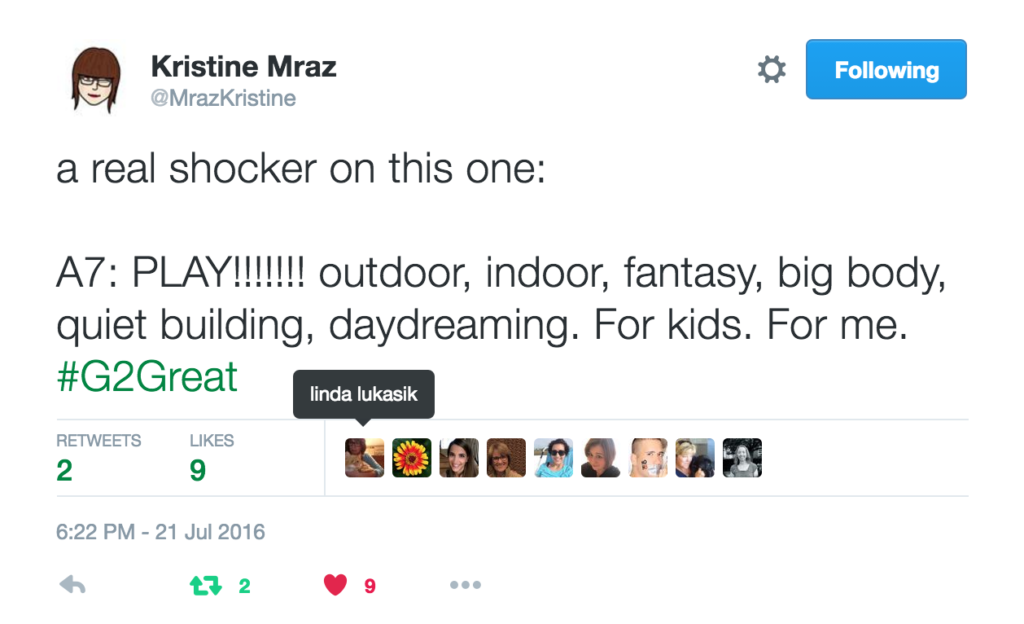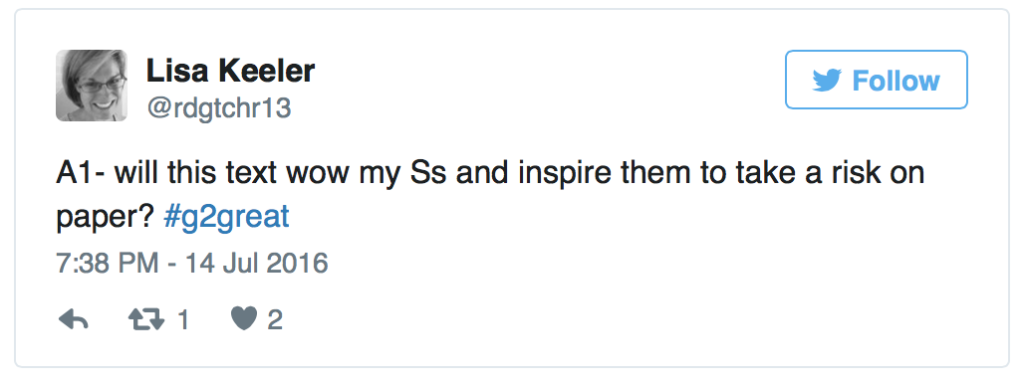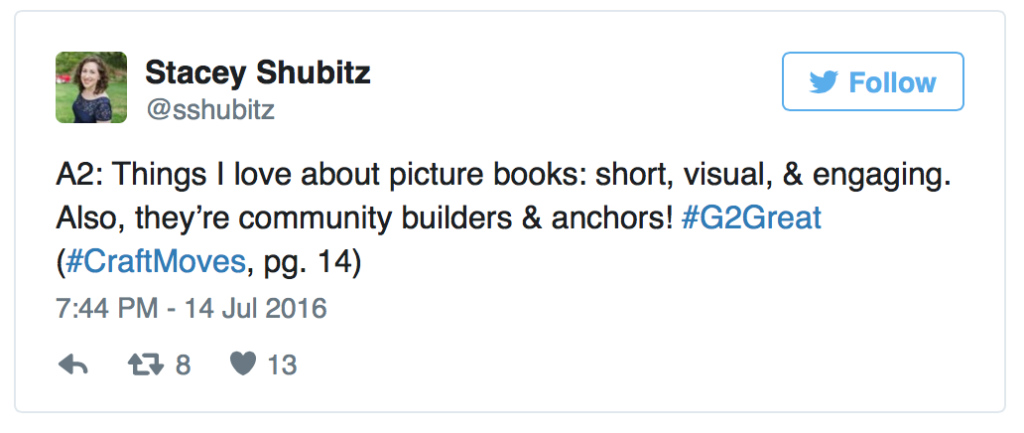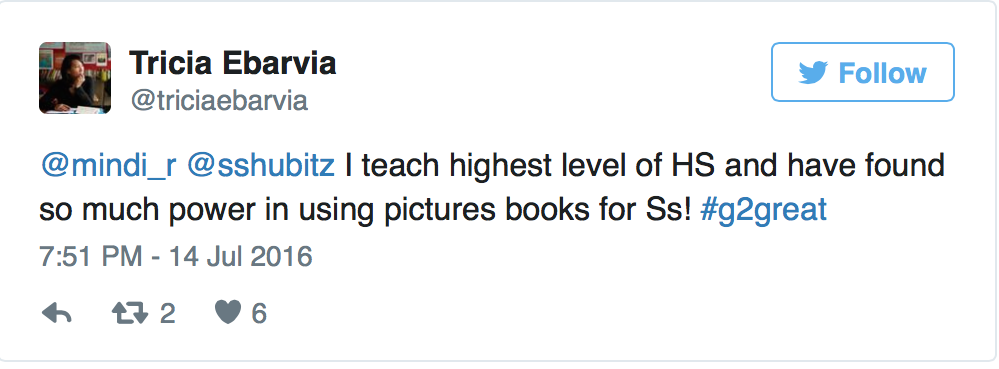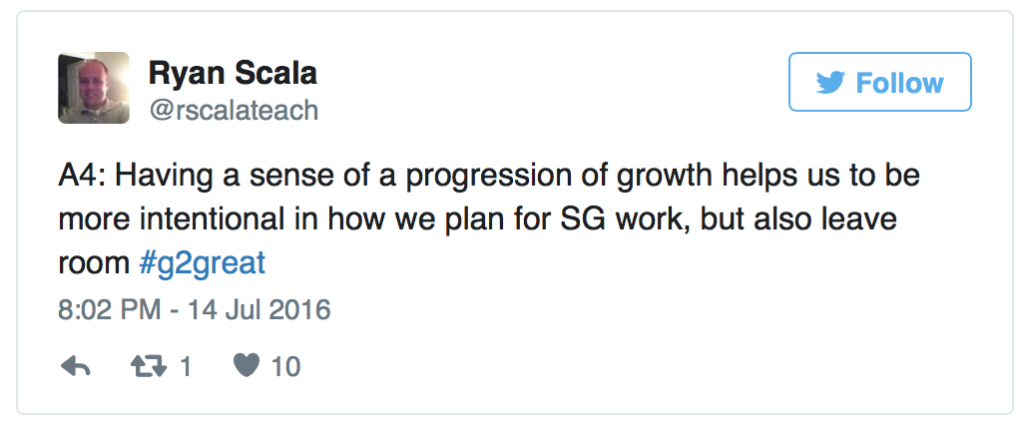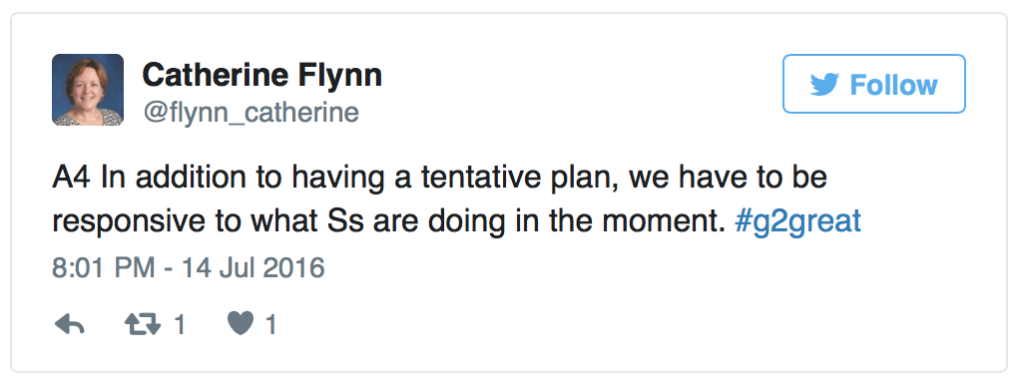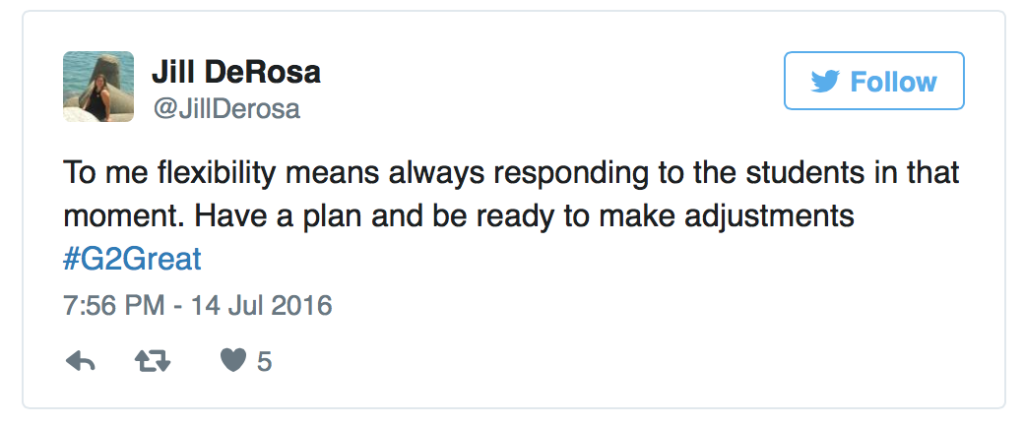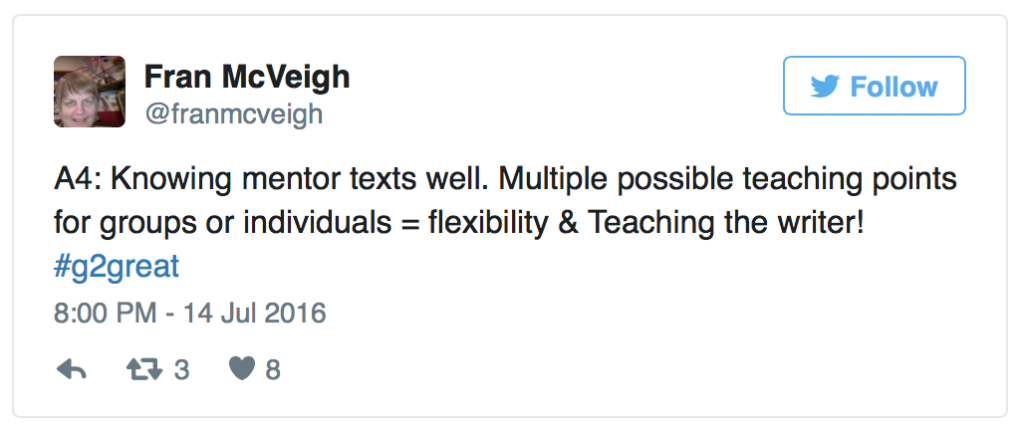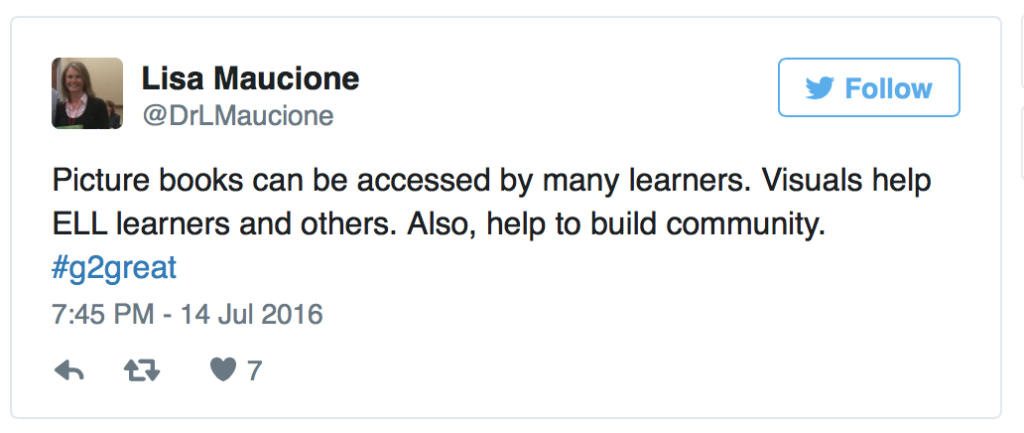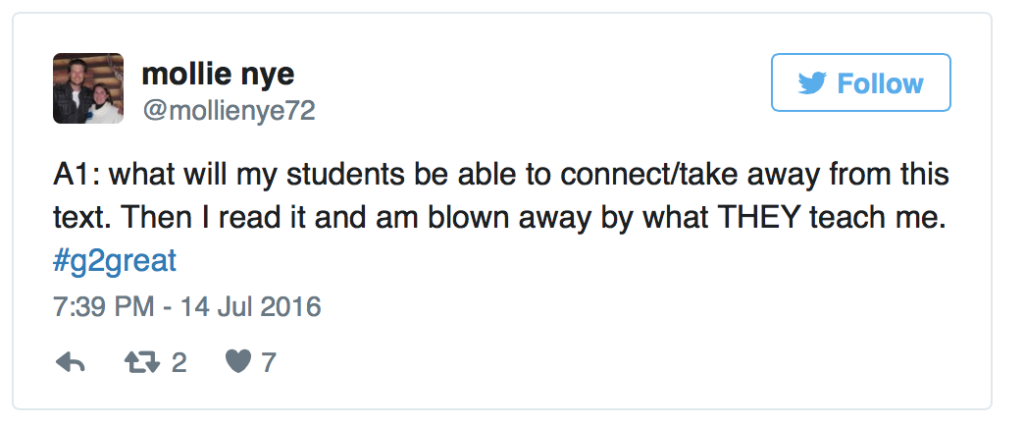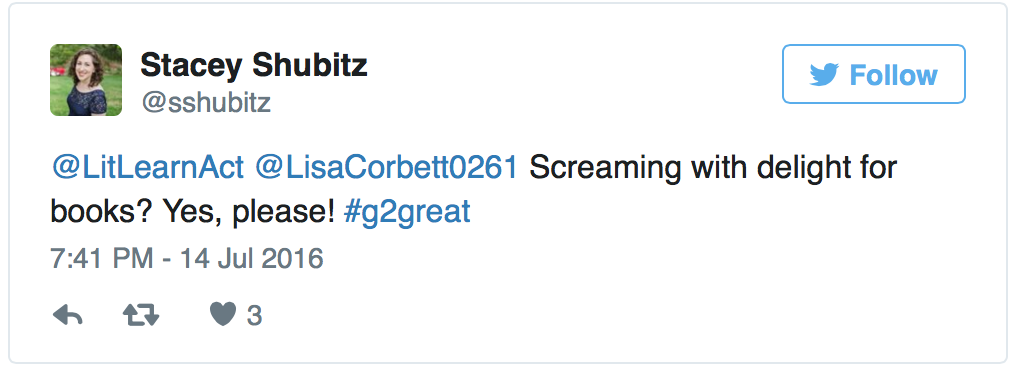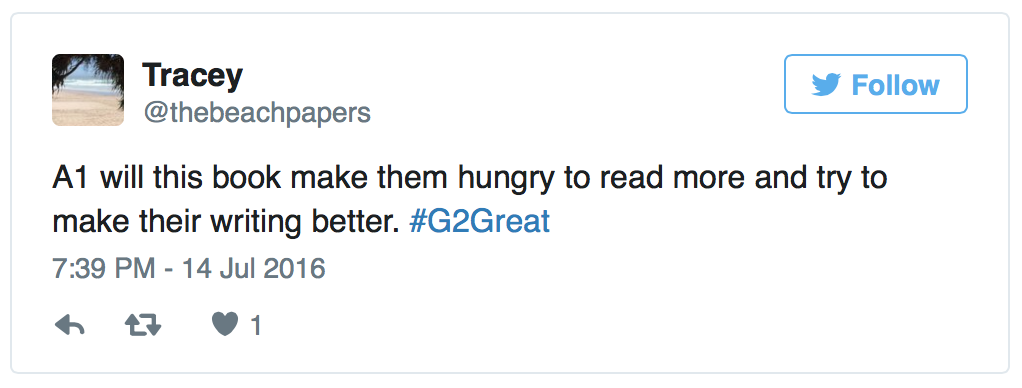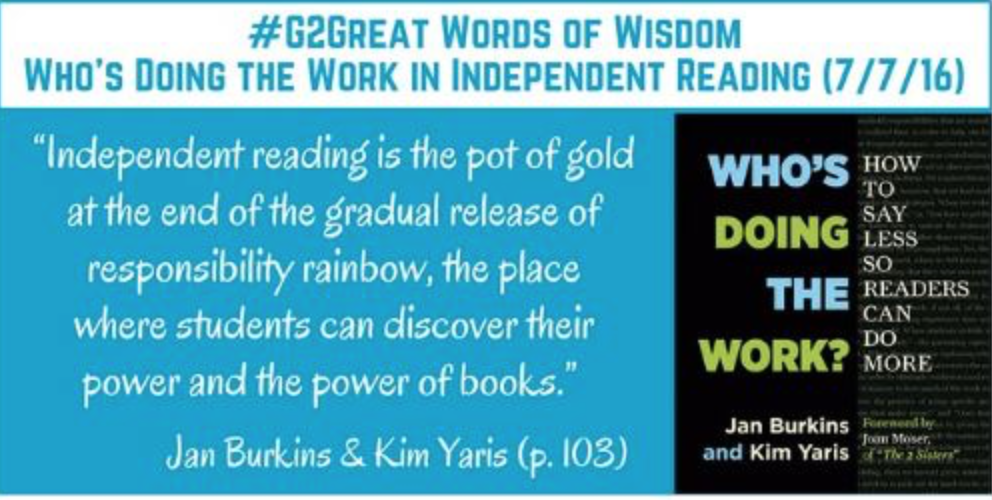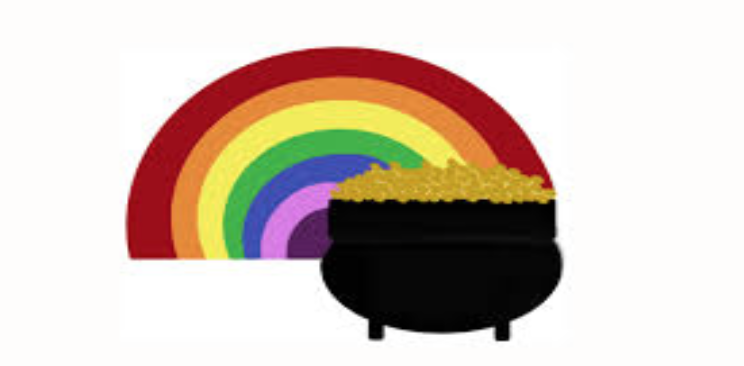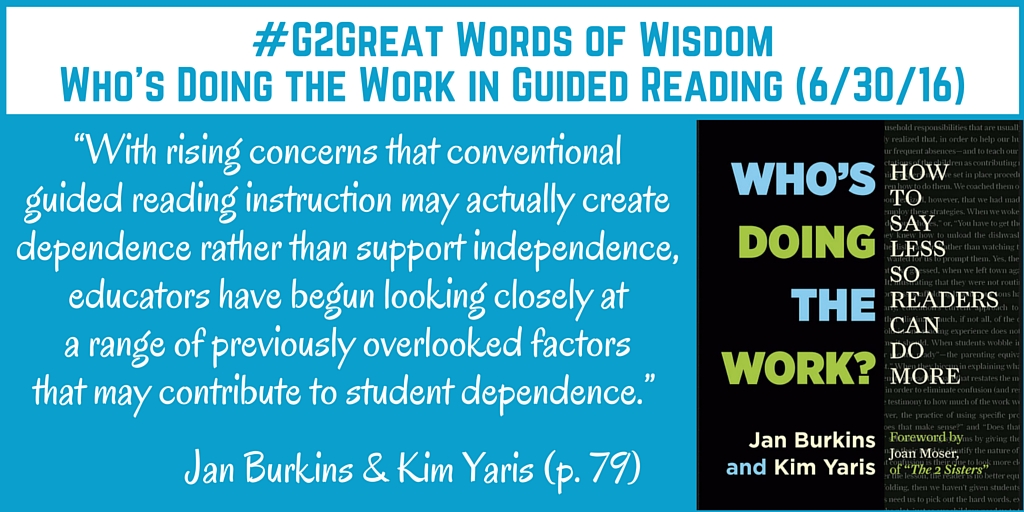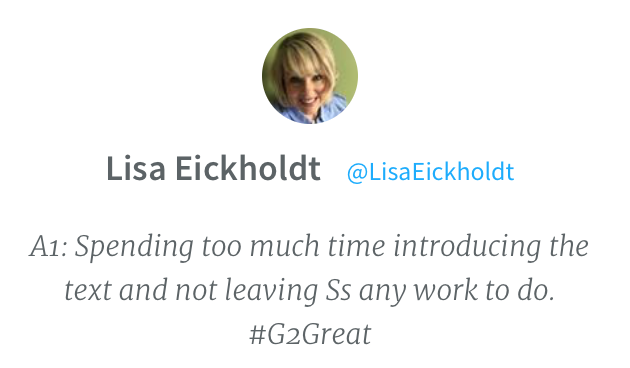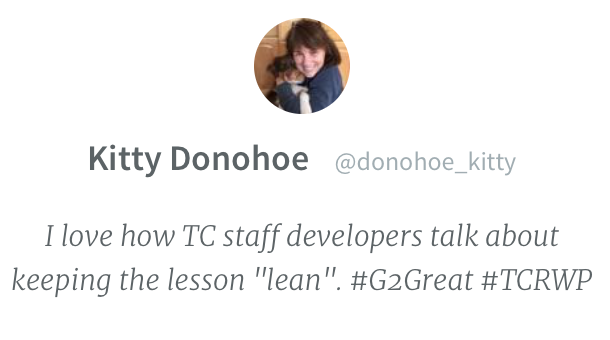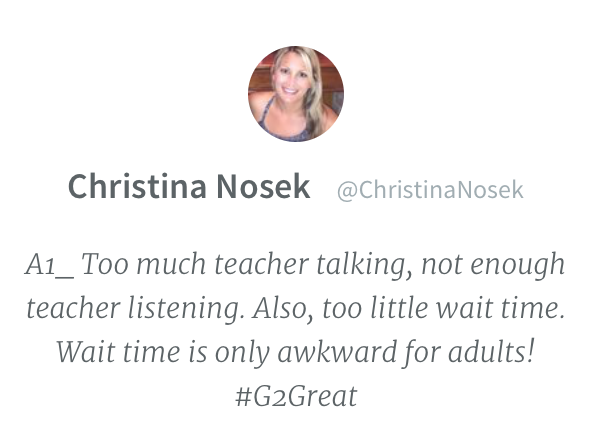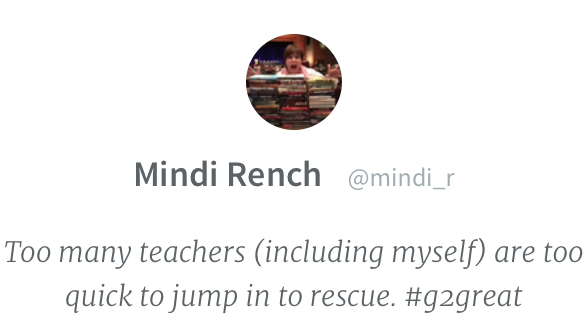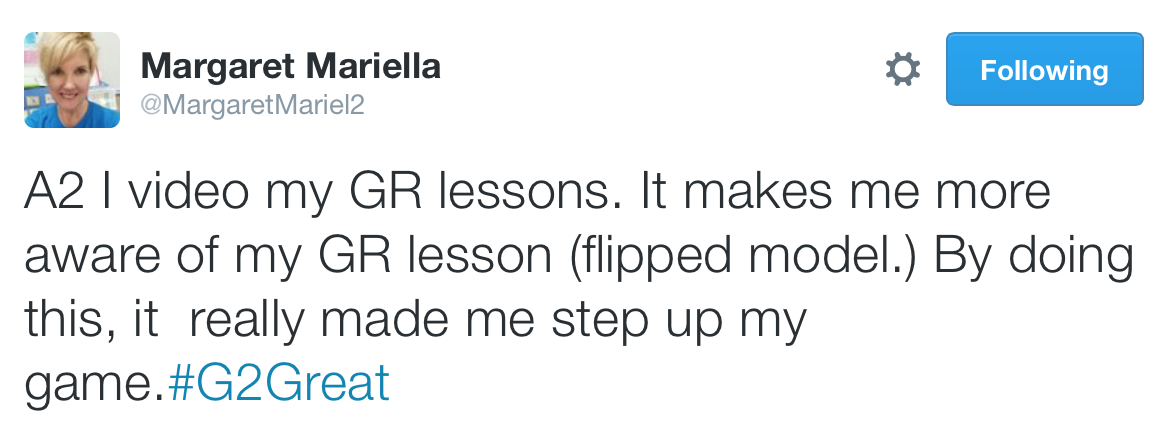By Amy Brennan
On July 28, 2016, #G2Great welcomed Jan Richardson as a guest host to chat about her book, Next Step Forward in Guided Reading. This book brings Jan’s latest thinking to teachers and helps them to identify and target instruction that supports each and every reader. Jan’s framework, Assess-Decide-Guide gives teachers a roadmap to work with students from PreA to Fluent readers. In reflecting on the chat there are 4 ideas about guided reading that are worth lingering with for a bit.
Guiding Readers Forward to Independence
Independence is the ultimate goal of guided reading, this is where students can practice alongside their peers while the teacher leans back and observes. The teacher can lean in only if needed and provide just enough coaching to prompt students to do the thinking work, access their reading toolbox and navigate the text using strategies they have learned.
Guiding Readers Forward Through Assessment
Jan’s framework begins with Assessment. Assessment, a word derived from the Latin word assidere, means to sit beside. As we sit beside the learners in guided reading we are watching and listening to understand the strategies that students are using. The assessment is what makes our teaching in a balanced literacy framework intentional. Planning with intention allows us to be very clear in our teaching goals or objectives. Jan’s message is supported by Douglas Fisher, Nancy Frey and John Hattie in their book Visible Learning for Literacy. The following quote from the book really validates the relationship and importance of assessment informing instruction. “Literacy learning can be enhanced when teachers communicate specific, relevant, and appropriate expectations for students.” In order to identify learning intentions or objectives we need to know exactly what our students are doing as learners. Teachers can only communicate these expectations when they have used assessment to inform their instructional planning.
Guiding Readers Forward by Opening Space for Thinking Time
During guided reading we are often tempted to lean in too much by talking too much or jumping in too quickly. The term wait time has traditionally been passed around in conversation especially with administrators and usually in a pre or post observation conference. Leaving enough wait time for students to process is a crucial part of the learning process. All learners need time to think. The connotation of the word wait makes it feel like even longer when we are allowing time for a student to think. Reframing wait time to thinking time opens up space for students to read, think and take action whether that action is employing a reading strategy or responding to a question or comment from the teacher or a peer or even generating their own questions. During guided reading we need to remember to keep the focus student centered. We need to allow sufficient thinking time so that students have the space to think and then access strategies from their reading toolbox.
Guiding Readers Forward by Advancing our own Professional Growth
Professional growth and learning is critical to improving student achievement. According to John Hattie’s (2012) research, professional development itself has a large enough effect size to ensure that students will gain a full year’s growth in a year of school. This is evidence enough to validate educators investing in their own professional growth. Additionally some other influences include providing formative evaluation, teacher clarity, feedback, self-reported grades, metacognitive strategies, teaching strategies, student-centered teaching, peer tutoring, and quality of teaching. There are about 60 more influences that are cited by John Hattie as having an effect size great enough to ensure a full year growth. With this evidence available and knowing how much students’ learning is within a teacher’s control, it is essential that we engage in opportunities for our own professional growth. Jan and Cindy offered some great suggestions for professional growth in planning and implementing guided reading. Here are some ideas that may help to expand your professional growth.
- Create opportunities to read Jan’s new book and share with others. Join a professional book club that extends this quick chat to talk deeper about Jan’s book.
- Start a Voxer book club where teachers can read and reflect where everyone will grow ideas about guided reading.
- Establishing a professional learning network to enhance your professional growth.
- In a digital or face to face connection, remember to be open to feedback from colleagues as well as students. There is much we can learn about our practices from others who watch or more importantly from the learner.
- Work with a coach or a colleague this can provide you with an opportunity to videotape your teaching and reflect on the experience together.
At #G2Great we are grateful that Jan joined us to share her new book, Next Step Forward in Guided Reading and to share her insight into guided reading. She also provided some examples of resources that are included in her book such as stage-specific lesson plan templates. Take a look below to see some of the resources Jan has created for her latest book on Guided Reading.
bit.ly/1Hjhfzk Lesson plan templates for different levels in guided reading
More resources bit.ly/1O0HYFB Prompts Guided Reading Flip Chart
